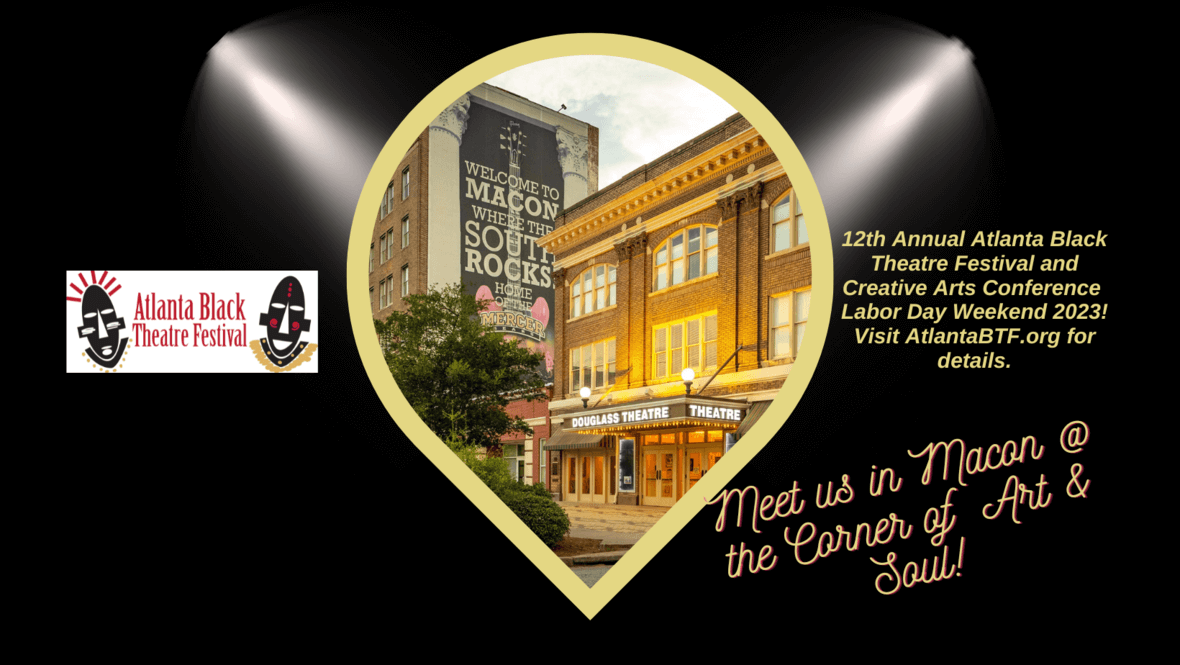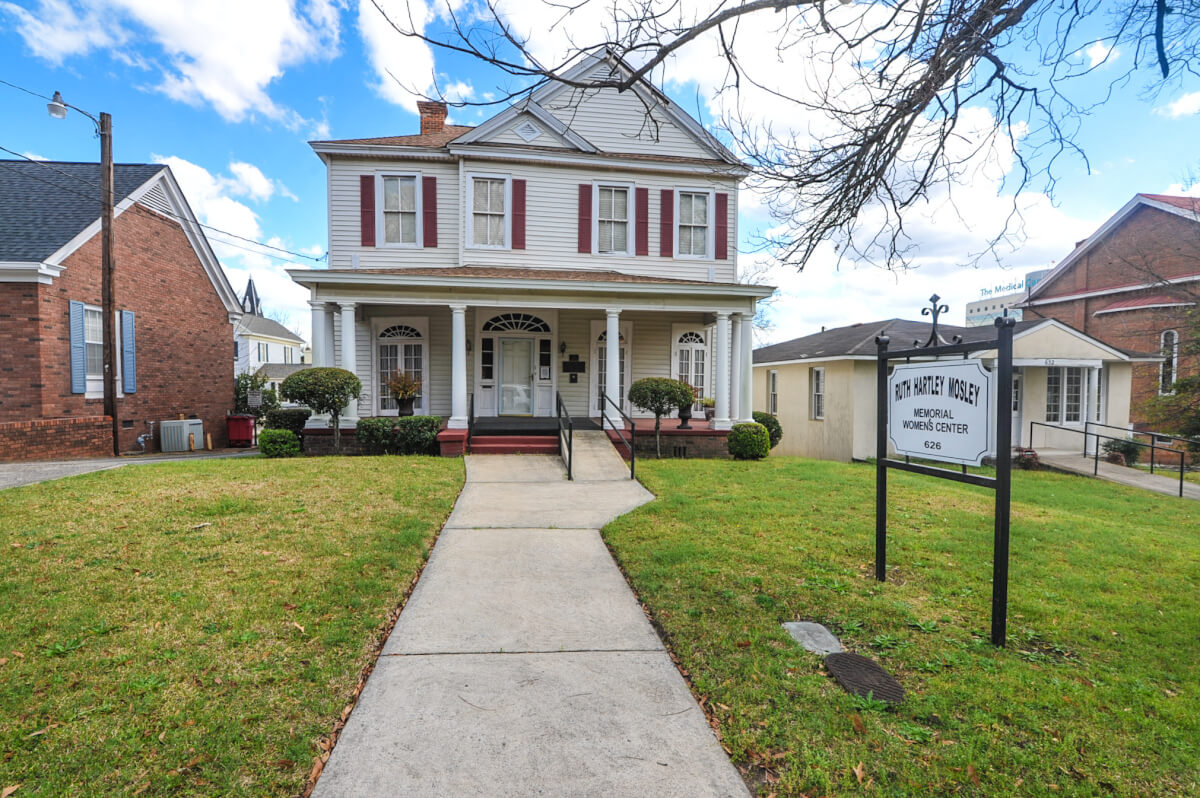
Black places and spaces: InTown’s proud legacy as a center of Black culture
By Clarence W. Thomas Jr.
Photography by Dsto Moore
A series of articles exploring the history of Central Georgia locales and their storied roles in Black culture. Find more at maconmagazine.com.
Locations of importance with historic ties to our Black community are bountiful in Macon. They serve as markers of the city’s past designed to educate and empower today’s residents with a sense of who we, all of Macon, were and what we can be.
RUTH HARTLEY MOSLEY MEMORIAL WOMEN’S CENTER
InTown Macon, the half mile area just outside of downtown in all directions, is a great place to begin exploring locations with historic ties to local Black folks. One is the Ruth Hartley Mosley Memorial Women’s Center, located at 626 Spring St. and encircled by H&H Restaurant, Beverly Knight Olson Children’s Hospital, St. Joseph’s Catholic School and Washington Memorial Library.
The stately two-story Victorian style home was built around 1890. Its exterior is accented with a multi-gable roof, a prominent porch, an asymmetrical front entrance and period sash windows. Inside is equally as wonderous. Guests are transferred immediately back in time by the aura of its owner and the eras in which Mosley occupied this space.
A feeling of who Mosley was and why she matters is evident. A portrait of her over the fireplace dominates the family room along with a playable piano, original furnishings and breathtaking imported chandelier. Connected to it is an elegant dining room complete with a cabinet of china. The 3,000-square-foot home is topped off with generous bedrooms, a gathering space and, unique to its time, an adjacent room with large windows for lots of sun and a great view of downtown Macon.
For those who knew Mosley at the time, it was easy to see why she desired and deserved to call this abode home after purchasing it in 1917. It doubled as her respite and as a gathering place for a host of everyday folks — and some well-known folks as well — until her death in 1975. Visitors included renowned educator Mary McLeod Bethune and United States Supreme Court Justice Thurgood Marshall.
Macon-Middle Georgia Black Pages founder Alex Habersham records his community-minded multimedia show, “A Call to Action,” at the center. He said it’s an honor to host his show in the house that Mosley made known.
“This house is an early indication of Black greatness in Macon. That almost starts with her. We’ve got to preserve this place so that the youth have a reference point and something to aspire toward,” Habersham said.
Born Ruth Price in Savannah in 1886, Mosley was a tall woman of commanding presence with a beautiful but serious face and penetrating eyes that gave her the look of a leader, according to the center’s website. She was trained as a nurse in North Carolina and completed her clinical training in Chicago. Mosley flexed her intellectual muscles after returning to Georgia by becoming the head nurse of the Colored section of the Georgia Sanitorium in Milledgeville at age 24. She was the first Black woman to achieve that rank.
Gerri M. McCord served as the executive director of Ruth Hartley Mosley Memorial Women’s Center for seven years, and is still involved there as a volunteer when not guiding Historic Macon Foundation’s board as its first Black chairperson. Mosley’s achievements as a young Black woman in the segregated South during the early 1900s is a big deal, McCord said. Her early achievements served as the launching pad of her life as a globetrotter, philanthropist, Civil Rights advocate, educator and entrepreneur.
“She was a woman of culture with a rich social life,” McCord said. “If she accomplished what she did at that time, then anything’s possible for today’s youth and young adults.”
Mosley married twice. In 1917 she wed Richard Hartley, a Macon businessman who purchased a funeral home — where she became a licensed mortician — and other real estate. Six years after his death, she married Fisher Mosley in 1937.
As she rose to social prominence in Macon, she traveled widely, took speech lessons and developed a refined speaking style. Mosley was active in the Civil Rights movement, planned and participated in sit-ins and was a leader of Macon’s NAACP. She was also a founding member of the Booker T. Washington Center in the historic Pleasant Hill neighborhood.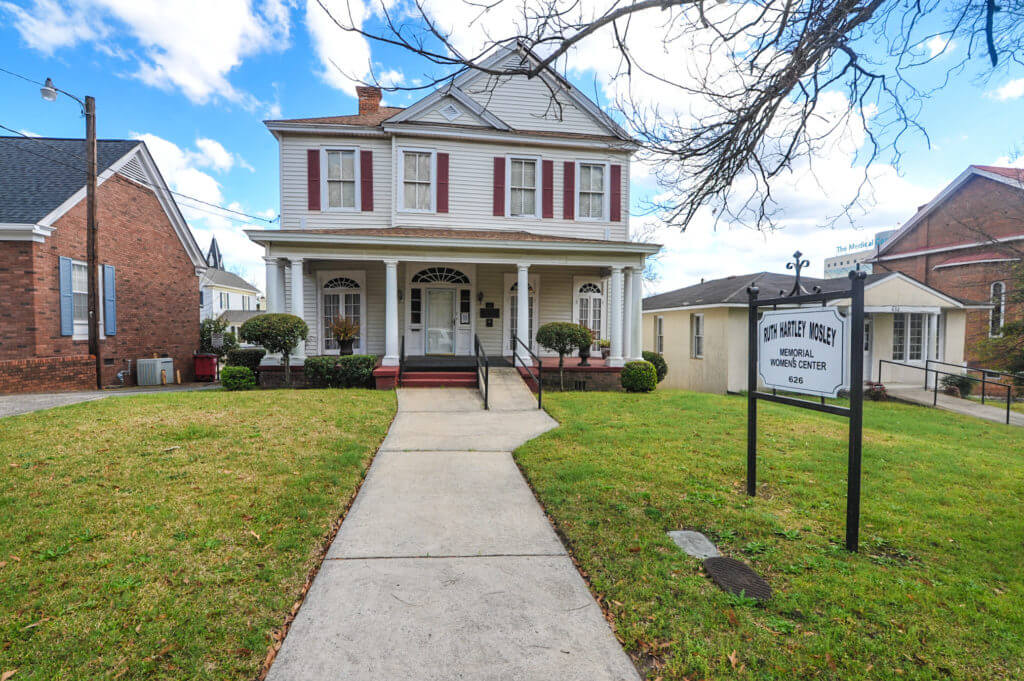
When Mosley died at age 89, her estate included trust funds to establish the Ruth Hartley Mosley Memorial Fund, which aided financially challenged students seeking to become nurses or other providers of health care, and to establish the Ruth Hartley Mosley Memorial Women’s Center in her home.
Former Bibb County School District Deputy Superintendent Sylvia McGee chairs the center’s board. She and four other members oversee the trust established by Mosley. They are additionally responsible for promoting programs, preserving Mosley’s legacy and maintaining the house as a safe haven for the community. McGee said the presence of the home today is as important as ever.
“This house has critical significance and symbolism. To have left this is an indication of Mrs. Mosley’s foresight. She was always on the cusp of social justice issues and saw herself as a standard bearer of African-American progress,” McGee said. “It’s a treasure that needs to be reclaimed by all of Macon as a source of pride and greatness.”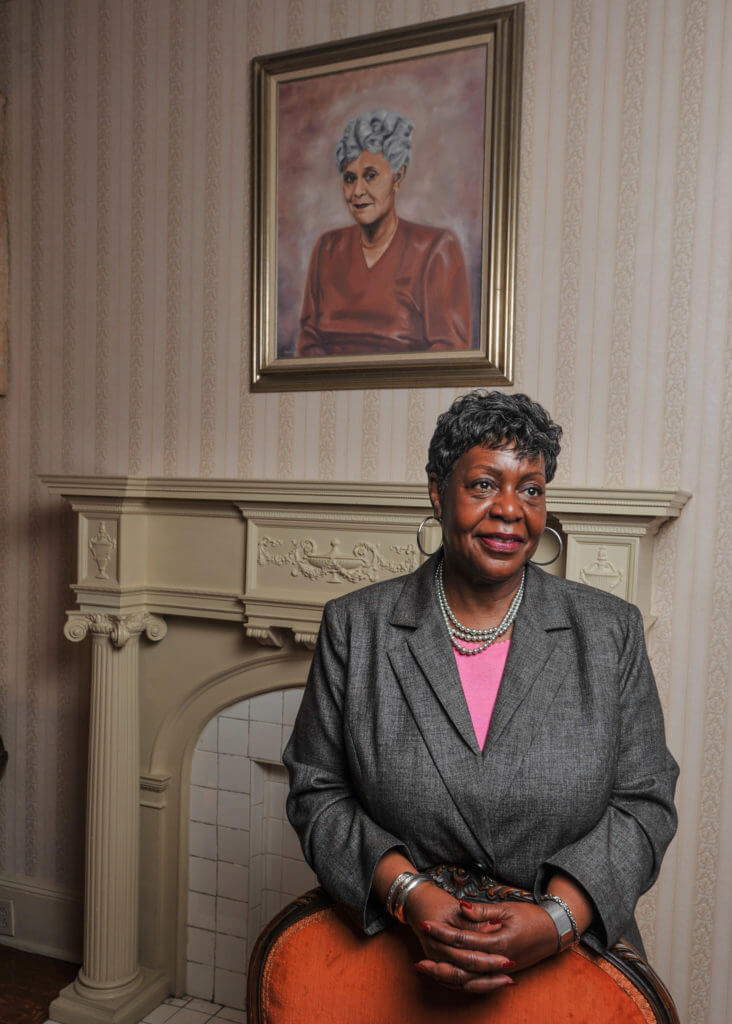
The center hit a rough patch in the last year, struggling to maintain its financial footing, but is recovering nicely, according to McGee. Currently, the center has limited accessibility to the public, but residents are welcomed and encouraged to visit or use it by appointment.
HISTORIC BLACK CHURCHES
ABOUND INTOWN
A few yards away from Mosley’s home is Steward Chapel African Methodist Episcopal Church at 887 Forsyth St. Mosley attended it — along with a plethora of people of importance from her time until now — and served as its secretary. It’s one of the original, five large InTown churches historically founded and/or attended by Macon’s Black community. Steward Chapel was established following Emancipation in the mid-1860s and is majestic.
Marked by an impressive steeple, messages of hope and inspiration in its stained-glass windows and two-tier sanctuary, Steward Chapel is named after author, educator, U.S. Army Chaplin and Buffalo Soldier Theophilus Gould Steward. Aside from Mosley, notable membership over time has included United States District Court for the Middle District of Georgia Judge Louis Sands; former Bibb County School District board member Wanda West; Macon-Bibb Commissioner Elaine Lucas and her husband, Ga. Sen. David Lucas; prominent dentist DT Walton Sr.; and Patricia Miller, the city’s first Black teacher to preside over white students.
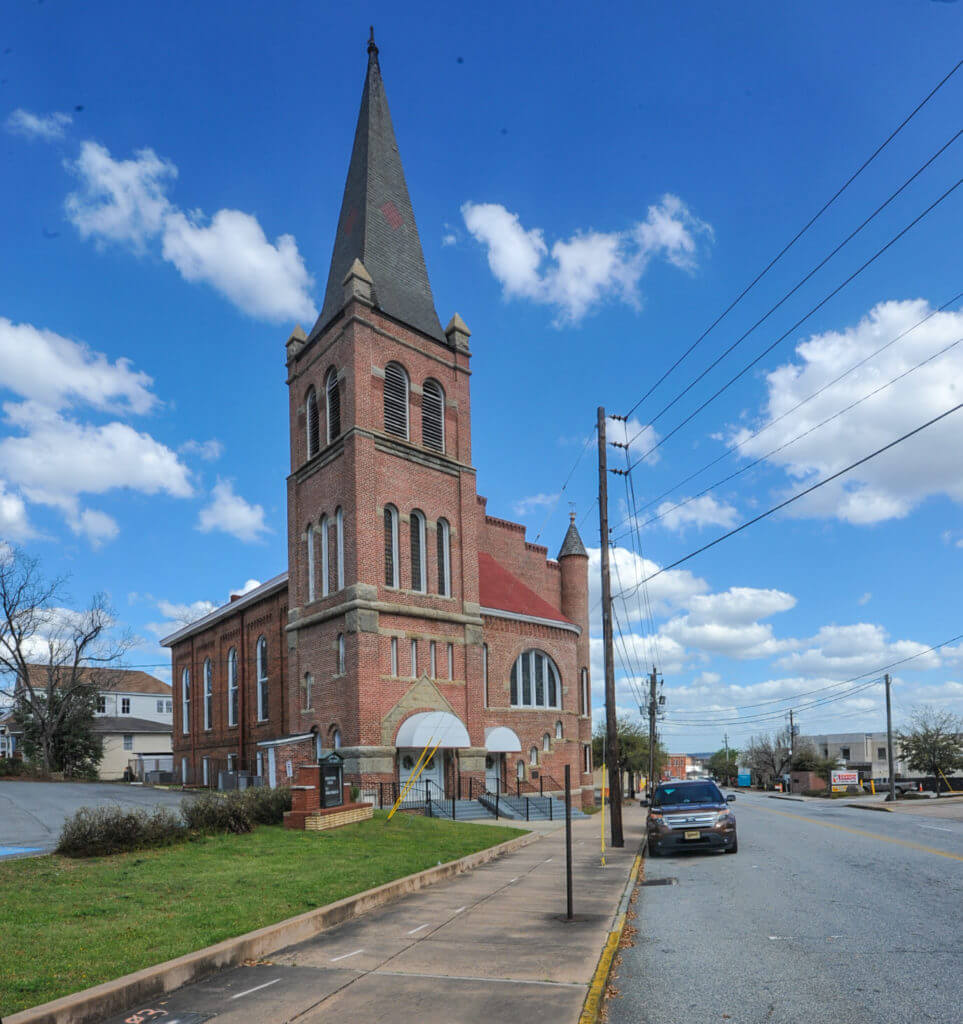
The Rev. Martin Luther King Jr. delivered his famous speech, “A Realistic Look at Progress in the Area of Race Relations” from the pulpit of Steward Chapel. The Revs. Jesse Jackson and Al Sharpton also appeared at the church.
Levornia Franklin Jr. presides today as Steward Chapel’s first Macon-born pastor. He said the church and its InTown companions, First Baptist Church, Washington Avenue Presbyterian Church, Holsey Temple Christian Methodist Episcopal Church and the original Tremont Temple Baptist Church — which was located across the street from Steward Chapel until moving to Bloomfield Road — all hold special places in history as repositories of stories related to Black Macon’s resilience and rise.
“These churches show where we came from. They reflect what we as a people can do when we come together in peace for a common cause,” Franklin said.
Each church among these has its own unique history. Washington Avenue Presbyterian was where educator Lucy Laney worshiped as a child under the leadership of her father, the Rev. David Laney. Lucy Laney High School in Augusta is named for her. Dr. Thomas Duval, a Macon-born, 75-year-old retired dentist and lay historian, attended the church with his family as a youth. The fourth edition of his coloring book, which highlights local Black iconic figures, will feature the elder Laney, famous for ringing the church’s bell for Emancipation following the end of the Civil War.
Duval believes the InTown Black churches’ development of leaders is one of their greatest contributions and references for today’s youth.
“They can be mental mentors for children today. The way they overcame adversity is powerful,” he said. “Every one of these churches has a rich story for youth to read and know about.”
Located on the same side of the street as Washington Avenue Presbyterian is Holsey Temple CME Church.
M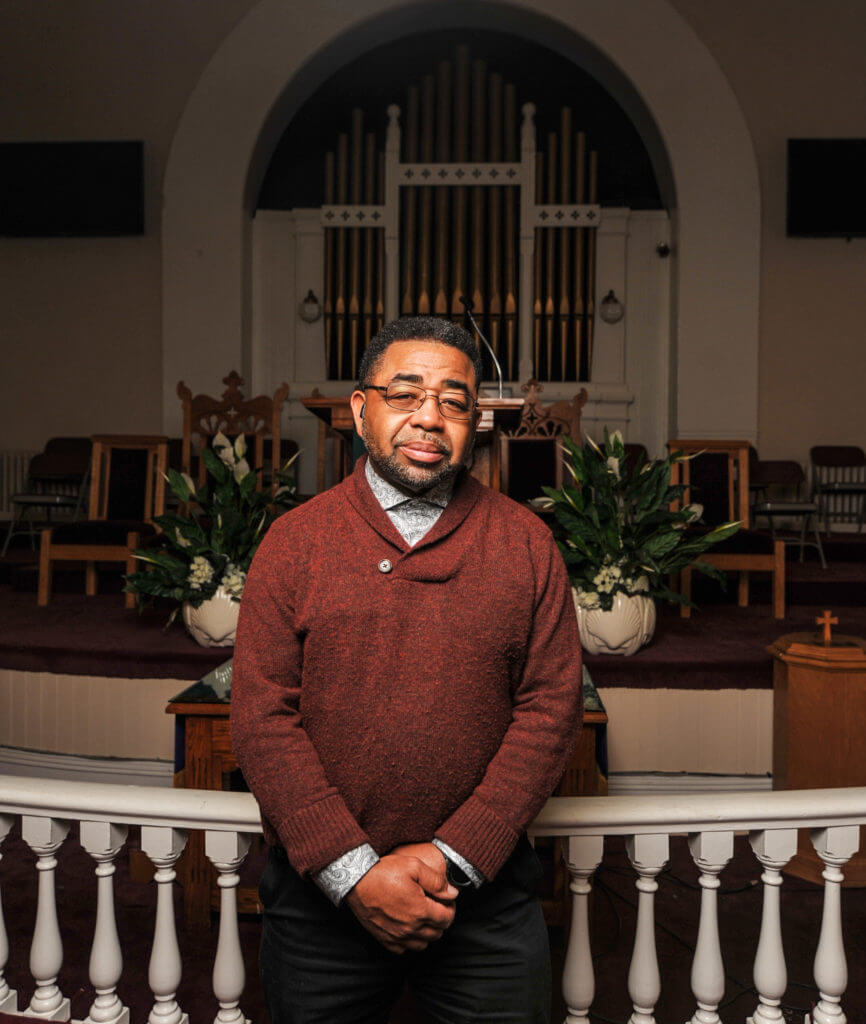 arie James-Duval’s work on a book about the church has taken her across the country collecting public records, visiting libraries and interviewing families. James-Duval’s resources reveal that Holsey Temple started in 1828. Many of the early members were enslaved people who settled in Macon along with their masters.
arie James-Duval’s work on a book about the church has taken her across the country collecting public records, visiting libraries and interviewing families. James-Duval’s resources reveal that Holsey Temple started in 1828. Many of the early members were enslaved people who settled in Macon along with their masters.
“They helped to build this city. These slaves were unsung heroes with an invisible history, but they made such a difference,” she said.
James-Duval considers the InTown Black churches as springboards of greatness. From them came Black businesses, organizations, initiatives and educational advancement.
“There’s so much greatness that came out of these churches,” she said. “They are invaluable sources of pride and history.”




